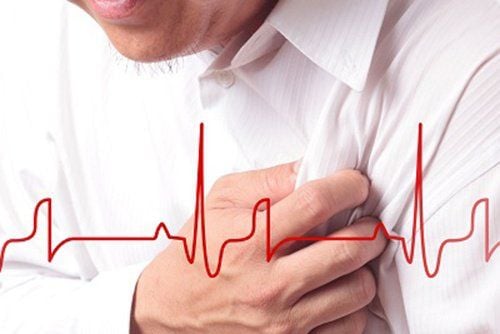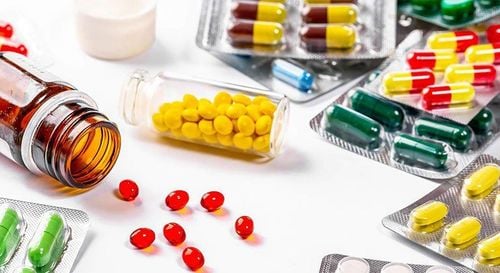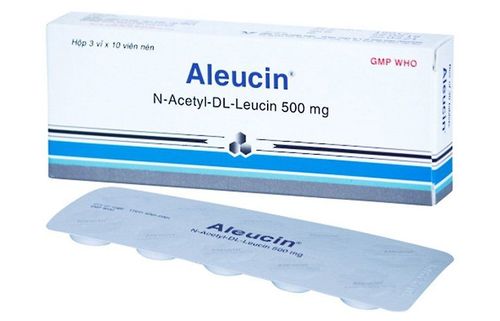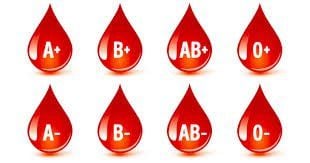This is an automatically translated article.
According to statistical results, currently an average of 1⁄3 of the world's population is anemic. However, many people are unaware of the consequences of this condition. So is anemia dangerous?
1. What is anemia?
Anemia is a term that describes a condition in which the number of red blood cells and hemoglobin is lower than the normal standards. Hemoglobin or hemoglobin is essentially a protein, which is also rich in iron and plays a role in helping red blood cells carry oxygen from the lungs to the organs in the body. Deficiency or reduction in the number of hemoglobin is the most important mechanism leading to anemia and makes the patient always feel tired, weak, or dizzy and headache due to the process of oxygen supply to the tissues. impaired.
Is anemia dangerous? This pathology does not ignore any audience, including men, women, children or the elderly. Therefore, anemia can be encountered in many different diseases, including internal medicine, obstetrics, pediatrics, and a number of other minor specialties. Anemia if left untreated for a long time without proper treatment can lead to dangerous complications such as heart failure, cerebral ischemia...
2. Classification of anemia diseases
Diseases and causes of anemia are diverse, can include the following:
Hemorrhagic anemia: Including acute bleeding (such as after severe trauma, gastrointestinal bleeding - duodenal ...) or chronic (such as bleeding from hookworm infection, hemorrhoids...); Anemia due to deficiency of blood-forming materials: Also known as nutritional anemia. Substances necessary for hematopoiesis include iron, vitamin B12, folic acid, vitamin C, protein...; Anemia due to disorders of hematopoiesis: Associated with diseases such as marrow failure or bone marrow dysplasia, the bone marrow is compressed by malignant cells or metastatic bone marrow cancer; Hemolytic anemia: Includes erythrocyte disorders (such as membrane abnormalities, target cell disease, G6PD deficiency, hemoglobin disorders in thalassemia or sickle cell disease...) or non-erythrocytic causes (e.g., immunological diseases, infections, toxicity, burns, etc.)

Thiếu máu có nguy hiểm không? Thiếu máu có thể gây biến chứng nguy hiểm
3. Manifestations and symptoms of anemia
Manifestations of anemia are very diverse, including:
Tinnitus, dizziness, frequent dizziness, when changing positions or exerting; Sudden fainting, especially common in people with severe anemia; Systemic anemia can lead to cerebral ischemia, so is cerebral ischemia dangerous? Signs of ischemia to the brain such as headache, memory loss, insomnia or drowsiness, mood swings, irritability, numbness of hands and feet, impaired working capacity (both in mind and limbs); palpitations, palpitations, possibly shortness of breath; Loss of appetite, bloating, indigestion or abdominal pain, diarrhea, constipation; Pale skin, pale mucous membranes or cases of hemolytic anemia may be accompanied by yellow skin and mucous membranes; Darkening of the skin and mucous membranes if anemia due to iron metabolism disorders. Mucosal color more accurately reflects anemia than skin color; Pale bloody or yellowish tongue in hemolytic anemia, dirty with anemia due to severe infection, red and thickened tongue in Biermer's anemia; The tongue spine is worn or lost, causing the tongue to be smooth, accompanied by dental impressions, seen in chronic anemia and hypochromic; Hair loss, brittle nails, flat or concave base, opaque color, notched...; Tachycardia can produce a systolic murmur due to ischemia. The process of diagnosing, classifying and determining the cause of anemia should be based on clinical manifestations and laboratory test results. However, tests still play a more important and decisive role. Tests commonly used to diagnose anemia include:
Complete blood count: The results show the number of blood cells (such as red blood cells, white blood cells, platelets), concentration, mass, and size. average size, change in the size of hemoglobin hemoglobin in red blood cells; Some more specialized tests will be ordered when a complete blood count shows anemia, including checking hemoglobin, counting reticulocytes, and measuring iron levels in the body and in blood cells.
4. Is anemia dangerous?
Is anemia dangerous is the question of many patients when suffering from this disease. A lack of hemoglobin or red blood cells may cause symptoms only for a short time, and the person should be able to recover when the body's processes are rebalanced. However, in most cases, anemia will become a disease, thereby affecting the function of all organs in the human body.
The symptoms of anemia are enough to make the body tired and cause a decline in quality of life, not to mention it can lead to serious complications as follows:
Arrhythmia, if anemia persists, untreated, there is a risk of heart failure; Impairment or sometimes loss of ability to live, work, even sudden fainting often; Pregnant women with anemia may have an increased risk of preterm birth; The most serious complication is death, especially in cases where the body suddenly loses a large amount of blood in a very short time, making it impossible for the body to recover in time.

Thiếu máu có nguy hiểm không? Thiếu máu có thể gây rối loạn nhịp tim cho người bệnh
5. Who is prone to anemia?
The following people have been shown to be susceptible to anemia:
Children under 2 years of age are at high risk of anemia if their diet does not provide enough iron. So is anemia in children dangerous? The pediatrician will examine and accurately diagnose whether the child has anemia or not, thereby giving appropriate treatment. Untreated severe anemia in children can affect brain development very dangerously; Women: The cause is partly related to the menstrual cycle or pregnancy period... These factors are all capable of affecting and changing the amount of blood in the body; Patients with chronic diseases such as kidney disease may develop anemia due to impaired red blood cell production; Adolescents can still be anemic, especially in children who develop too quickly, but their nutrition is not complete with all groups of substances and causes the body to lack blood-forming materials.
6. How to treat anemia?
Depending on the cause of the anemia, the patient will have appropriate treatment measures:
In case of iron deficiency anemia, it is necessary to increase iron supplementation as prescribed by the doctor with preparations. iron supplement. Note that excess iron supplementation can lead to some dangerous effects. Symptoms of iron overload include fatigue, headache, vomiting, diarrhea, discomfort... Along with that, patients should increase their iron intake through their daily diet. day with foods rich in iron such as red meats, legumes, egg yolks, whole grains, nuts and seafood...; In case of anemia due to vitamin B12 and folate deficiency, you should follow your doctor's instructions on increasing vitamin B12 in your daily diet. Food sources providing abundant sources of vitamin B12 include meat, liver, kidney, fish, snails (such as oysters, mussels), milk and dairy products, eggs...; A number of specialized treatment measures at medical facilities prescribed by doctors for patients with anemia include:
Some people with anemia due to chronic kidney disease may have to inject the hormone erythropoietin to stimulate it. hematopoiesis; Patients with sickle cell disease can use hydroxyurea for pain relief; In case of severe anemia, the doctor should prescribe blood transfusion of the same group when necessary; When the body does not produce enough red blood cells, intervention can be with a bone marrow transplant or a cord blood cell transplant; If the blood cells are destroyed too quickly, plasma exchange or splenectomy may be indicated. Anemia not only affects the patient's quality of life but is also a factor in aggravating other diseases. Therefore, when symptoms of anemia appear, you need to see a specialist, supplement with iron-rich foods and nutrition to improve the above condition.
Please dial HOTLINE for more information or register for an appointment HERE. Download MyVinmec app to make appointments faster and to manage your bookings easily.













